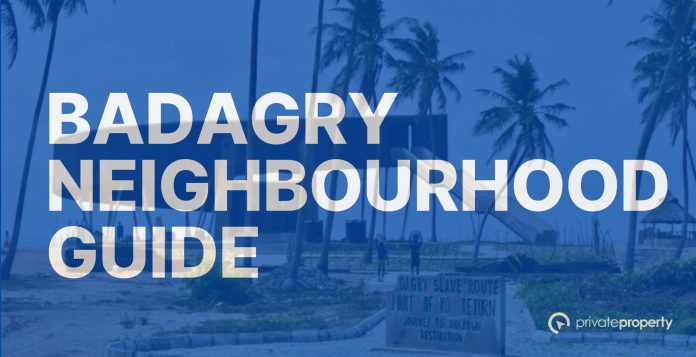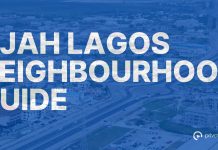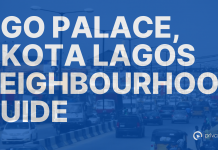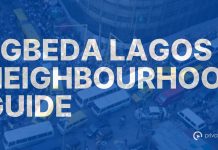When the name “Badagry” is mentioned, the mind immediately travels to a somber past. Known as the “Point of No Return,” this coastal town in Lagos State is a profound pilgrimage site, forever etched in history as a major slave trade port. But to see only this aspect is to miss the vibrant, resilient, and culturally rich town that exists today.
Badagry is a living museum, a serene getaway, and a bustling community all at once. This guide will take you beyond the history books to explore the unique neighborhoods and must-visit areas that define modern-day Badagry.
The Historical Core: Where Memory Lives
Any tour of Badagry must begin at its historical heart. This isn’t a single neighborhood but a cluster of areas interconnected by walking trails and shared history.
- Marina Waterfront: This is the epicenter of Badagry’s historical tourism. Strolling along the marina, you are walking the same paths that millions were forced to tread. Key sites here include:
- The Slave Port Museum & Badagry Heritage Museum: Housed in the former district officer’s compound, this museum contains a harrowing and essential collection of relics, including chains, manacles, and graphic explanations of the slave trade process.
- Seriki Faremi Abass Slave Barracoon: A powerful and emotional visit to the cell complex named after a Brazilian slave merchant, where captured Africans were held in deplorable conditions before being shipped off.
- The Point of No Return: A symbolic and moving monument marking the final spot where enslaved people last set foot on their homeland before the transatlantic journey. The walk to this point is a quiet, reflective experience.
- Vlekete: This area is home to the Vlekete Slave Market, where the buying and selling of human beings took place. The preserved market square and the nearby Spirit Attenuation Well (where captives were forced to drink to make them forget their homeland) are stark reminders of this brutal commerce.
The Commercial and Administrative Hub: Ajara
For a taste of contemporary Badagry life, head to Ajara. This is the modern administrative and commercial nerve center of the town. Unlike the quiet, reflective historical core, Ajara is bustling with activity.
- Vibe: Lively, commercial, and official. You’ll find banks, government offices, the main motor parks, and a dense concentration of shops, markets, and local eateries.
- Highlights: The Badagry Central Market is a fantastic place to experience local life, buy fresh produce, and sample street food. Ajara is also where you’ll find more modern accommodations and amenities. It’s the best place to base yourself if you want to be in the midst of everyday Nigerian town life.
The Coastal Escape: Gberefu Island and Beaches
Badagry isn’t all heavy history; it also boasts beautiful, serene coastlines.
- Gberefu Island (Point of No Return Island): This peninsula is accessed by a short boat ride from the marina. It’s where the historical “Point of No Return” monument is located, but the area is also developing a quieter, more rustic vibe.
- Suntan Beach & Coconut Beach: These are the main public beaches in Badagry. While not as developed as some of Lagos’s famous beaches, they offer a more authentic and peaceful experience. Lined with coconut trees, they are perfect for a relaxing afternoon, a picnic, or enjoying fresh coconut water and grilled fish right by the Atlantic Ocean.
The Residential and Border Town: Seme
Heading west from the town center towards the Republic of Benin, you enter the Seme area.
- Vibe: A bustling border town with a unique cross-cultural energy.
- Highlights: Seme is a major hub for cross-border trade and transit. The atmosphere here is dynamic, with a mix of Nigerian and Beninese influences evident in the markets, languages, and food. It’s a fascinating place for people-watching and understanding the economic life of the region.
Tips for Your Visit:
- Getting There: Badagry is about a 1.5 to 3-hour drive from Lagos, depending on traffic. Public buses (Danfo) and shared taxis run regularly from Mile 2 and other major motor parks in Lagos.
- Guides are Essential: To truly understand the historical sites, hiring a licensed local guide from the Badagry Heritage Museum is highly recommended. Their narratives add deep context and emotion to the experience.
- Where to Stay: Accommodation ranges from basic guesthouses in Ajara to a few more comfortable resorts and hotels on the outskirts, like the popular Badagry Serene Resort.
- What to Eat: Don’t leave without trying fresh seafood, especially pepper soup and grilled fish, often available at the beaches and local restaurants.
Badagry is a journey of contrasts—between profound sorrow and breathtaking beauty, between a painful past and a resilient present. By exploring its diverse neighborhoods, from the solemn Marina to the bustling Ajara and the serene beaches, you don’t just learn history; you experience the many layers of a truly unique Nigerian town.
List of Areas in Badagry, Lagos
- Afowo Doforo
- Agaw Awusa
- Age Mowo
- Ago Hausa
- Agonrin
- Ahanfe
- Ajara
- Ajara Agamaden
- Ajido
- Akarakumo
- Akawkaw
- Akoko
- Ale
- Angorin
- Apa
- Appa
- Asepe-Musin
- Badagry
- Doforo
- Epe
- Gan’ingbo
- Ganme
- Gbaji
- Gbanko
- Henume
- Ibiku
- Igborosun
- Ikawga
- Ilogbo
- Imeke
- Iragbo
- Iragon
- Itawga
- Itoga
- Iyafin
- Kese
- Komi
- Kveme
- Kweme
- Magbon
- Moba
- Morogbo
- Mosafejaw
- Mosafejo
- Mowo
- Obele
- Ogungbe
- Oluge Lagoon
- Pasi
- Pota
- River Imede
- Ropoji
- Tawpo
- Topo
- Weshere
- Wuru
- Yewa
- Zinvie









